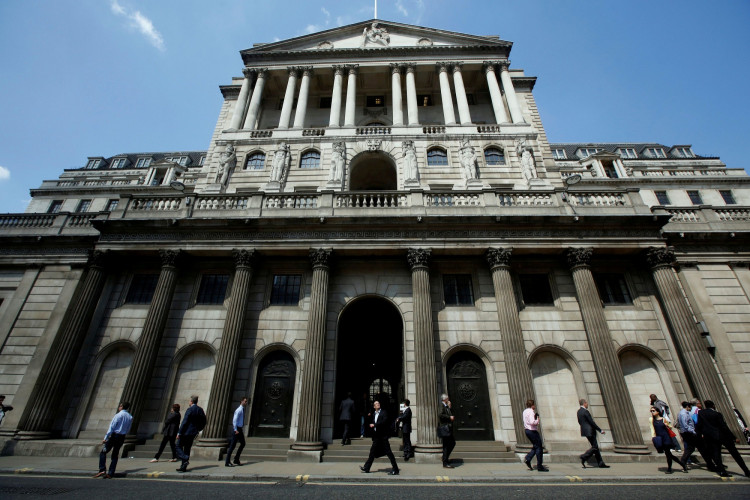The Bank of England has held interest rates at 5% following its September meeting, maintaining a cautious stance despite global trends towards lower rates. The Monetary Policy Committee (MPC) voted 8-1 in favor of keeping the rate unchanged, with only Swati Dhingra pushing for a quarter-point cut. This decision aligns with expectations from many analysts who anticipated that it would be premature for the central bank to implement another cut so soon after its first reduction in four years last month.
In addition to maintaining the interest rate, the MPC approved plans to reduce its stock of British government bonds by an additional £100 billion over the next year. This decision weighs on government finances but signals a cautious approach to unwinding the Bank's balance sheet without disrupting the broader economy. Analysts have noted the BoE's preference for a slow, measured approach to rate cuts as it navigates the challenges posed by sticky inflation and a tight labor market.
Following the announcement, the pound rose to its highest level since March 2022, trading just above $1.33. Yields on British government bonds also rose, and London's FTSE stock index trimmed some of its earlier gains. Markets, however, are bracing for further rate cuts, potentially as early as November, as the BoE continues to monitor key economic indicators.
Chris Arcari, head of capital markets at Hymans Robertson, noted that "elevated core and services inflation" suggests a slower pace for rate reductions, with markets already pricing in a fall in the bank rate to 3.3% by the end of 2025. Arcari also highlighted that while inflationary pressures are subsiding, core inflation remains a concern, rising to 3.6% in August from 3.3% in July. This has contributed to the BoE's cautious approach.
Laura Cooper, a global investment strategist at Nuveen, commented on the central bank's hesitation to follow the U.S. Federal Reserve's path in aggressively cutting rates. She suggested that as the BoE moves forward, the fiscal environment and upcoming budget will play a pivotal role in shaping future policy decisions. "Stubborn services inflation should ease as labor market slack builds," Cooper added, emphasizing that fiscal adjustments in November could lead to a more aggressive rate-cutting cycle.
Jamie Niven, a senior portfolio manager at Candriam, agreed with the BoE's measured approach, suggesting another 25-basis-point cut could occur in November. He added that the decision to continue asset purchase run-offs could support the gilt curve, particularly at the longer end. "The gradual reduction of assets is positive for the long-term outlook," Niven remarked.
This announcement comes as the BoE continues to navigate an economic landscape marked by slowing inflation and a tight labor market. With inflation rates holding at 2.2% and labor market conditions softening, the Bank's decision to wait before making another move reflects its concern over balancing growth with inflation control.
Henry Cook, an economist at MUFG, commented on the Bank's focus on wage growth, which remains elevated compared to other easing cycles. He noted that nominal pay growth continues to be "uncomfortably high," adding that quantitative tightening efforts are proceeding as planned, with no immediate need for adjustments.
Despite the decision to hold rates steady, many analysts expect further cuts to come soon. Dean Turner, chief European economist at UBS Global Wealth Management, predicts the next cut will come in November. "Armed with new forecasts and likely a modest downgrade in future inflation, the BoE could move more decisively at the end of the year," he said.
For consumers and businesses, this decision offers a measure of stability as borrowing costs remain elevated but steady. "There is optimism that the painful era of high interest rates is coming to an end," said Susannah Streeter, head of money and markets at Hargreaves Lansdown. This sentiment, coupled with the U.S. Federal Reserve's decision to cut rates, has buoyed markets and offered a more positive outlook for multinational companies reliant on global economic health.
As the BoE looks ahead to the next meeting, attention will be on inflation data, wage growth, and labor market dynamics. Lindsay James, an investment strategist at Quilter Investors, emphasized the importance of these factors in shaping future policy moves. "The BoE must strike a delicate balance between controlling inflation and supporting economic growth, especially as dark clouds gather once again over the UK economy," she said.






